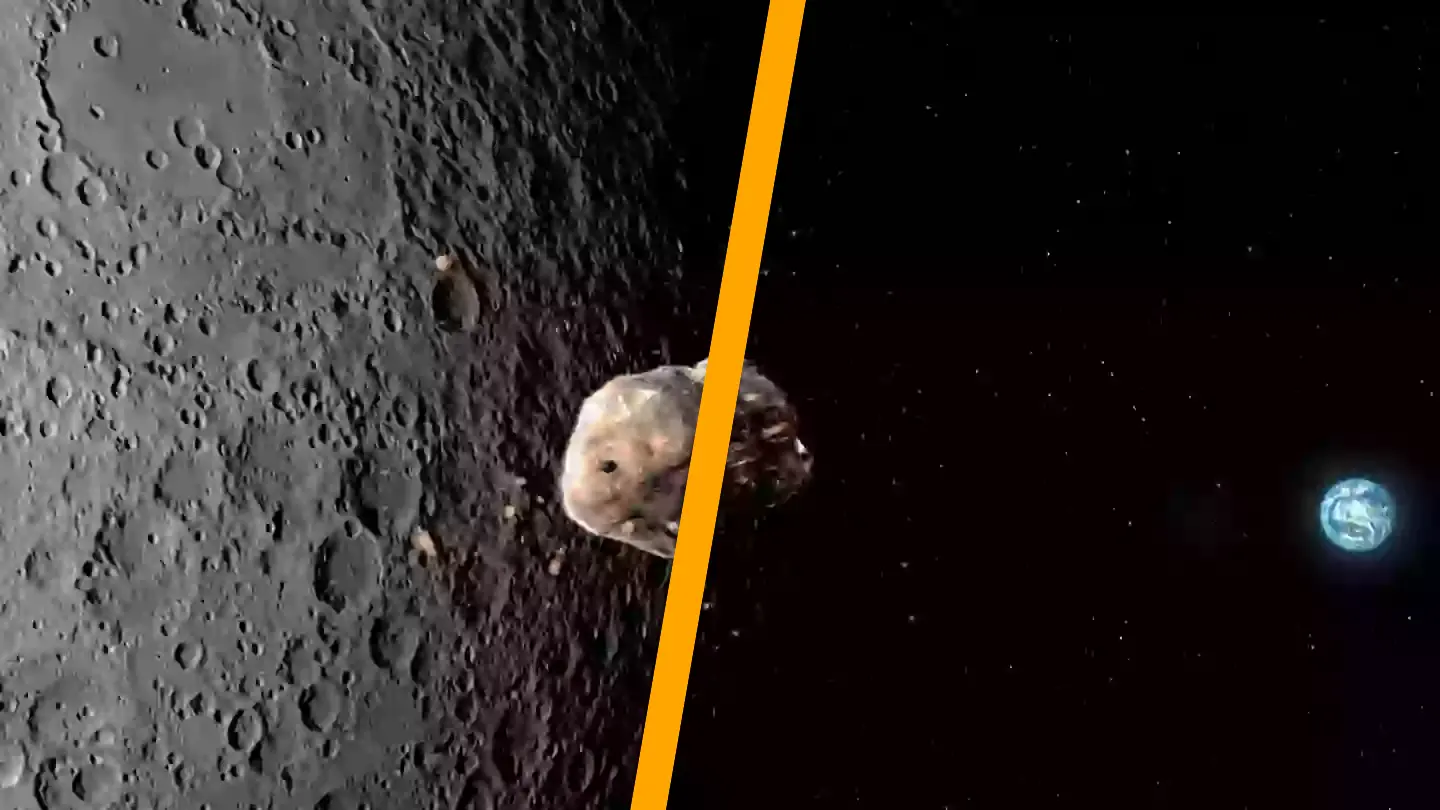An expert has detailed the potential consequences if the ‘city-destroying’ asteroid named ‘2024 YR4’ were to strike the Moon instead of Earth.
Recently, NASA scientists increased the estimated probability of Asteroid 2024 YR4 striking Earth from 1.2 percent to 2.3 percent.
This asteroid is projected to possibly impact Earth on December 22, 2032.
Reports indicate that the asteroid’s size could be comparable to the Statue of Liberty, prompting scientists to carefully evaluate the best approach for dealing with it.
However, scientists have also indicated that there is a possibility of 2024 YR4 colliding with the Moon.
David Rankin, an operations engineer at the University of Arizona’s Catalina Sky Survey, stated there is a 0.3 percent chance of the asteroid hitting the Moon.
If such a rare event were to occur, the effect on Earth would be minimal.
“There is the possibility this would eject some material back out that could hit the Earth, but I highly doubt it would cause any major threat,” Rankin mentioned to New Scientist.
Gareth Collins from Imperial College London also noted: “We would be quite safe on Earth. Some small ejecta fragments might reach Earth, but [would be] totally harmless.”
These fragments would ultimately disintegrate in the atmosphere, according to Collins, ensuring no danger to those on Earth.
Dr. Robin George Andrews previously cautioned about the potential pitfalls of attempting to mitigate the asteroid’s impact.
On Twitter, he discussed the Double Asteroid Redirection Test (DART), a mission that explores the concept of asteroid deflection by altering an asteroid’s trajectory using kinetic impact.
“Nobody wants to accidentally ‘disrupt’ an asteroid, because those components can still head for Earth. As I often say, it’s like turning a cannonball into a shotgun spray,” Andrews remarked.
He added, “But we aren’t going to see it again until another Earth flyby in 2028. So much could go wrong if we try and hit it with something like DART.”
“It may be smaller, or larger. If it’s too big, we may not be able to deflect it with one spacecraft. We’d need several to hit it perfectly, all without catastrophically breaking it.”
In terms of potential impact locations on Earth, Rankin has mapped a ‘risk corridor,’ suggesting a possible collision in areas spanning northern South America, the Pacific Ocean, southern Asia, the Arabian Sea, and parts of Africa.
This means countries like India, Pakistan, Bangladesh, Ethiopia, Sudan, Nigeria, Venezuela, Colombia, and Ecuador could be at risk of the impact.

